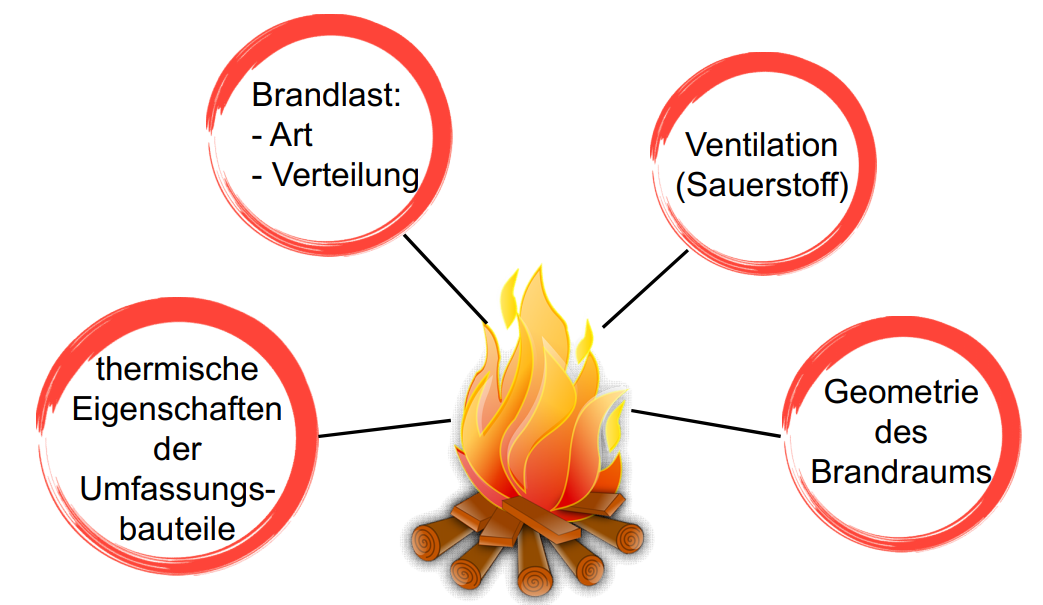Requirements for a fire and course of a fire
What are the requirements for a fire?
Similar to a static calculation, in which the stresses are compared to the existing stress capacities, the effects must first be compiled for a fire protection design. The extent and timing of fires play a very important role, which is influenced by the following points, among other things:
- Ignition source;
- type and distribution of the fire load;
- ventilation conditions;
- extinguishing devices.

How does a fire typically develop?
The large number of parameters already indicates that every fire will be different. Therefore, the goal must be to record the characteristics of a fire and to depict them with a simplified model in the fire protection design. The usual way is the dimensioning using the ISO standard fire. It is also possible to record the various influences more precisely using so-called natural fire curves.
What is the advantage of using the ISO standard fire?
Proof of fire protection using natural fire curves is still the exception today. Instead of depicting the exact course of the fire, the so-called ISO standard fire is usually used. It created the basis for uniform test conditions for structural members, on the basis of which classification into fire resistance classes can take place.
In most cases, the assumption of the ISO standard fire will lead to conservative results, as it envisages constantly increasing temperatures at a high level. A decay phase is therefore not shown. On the other hand, this statement cannot be generalized, since under special circumstances much higher temperatures can occur, as can be the case with petrol fires, for example. Under this condition, of course, other temperature-time curves must be used.